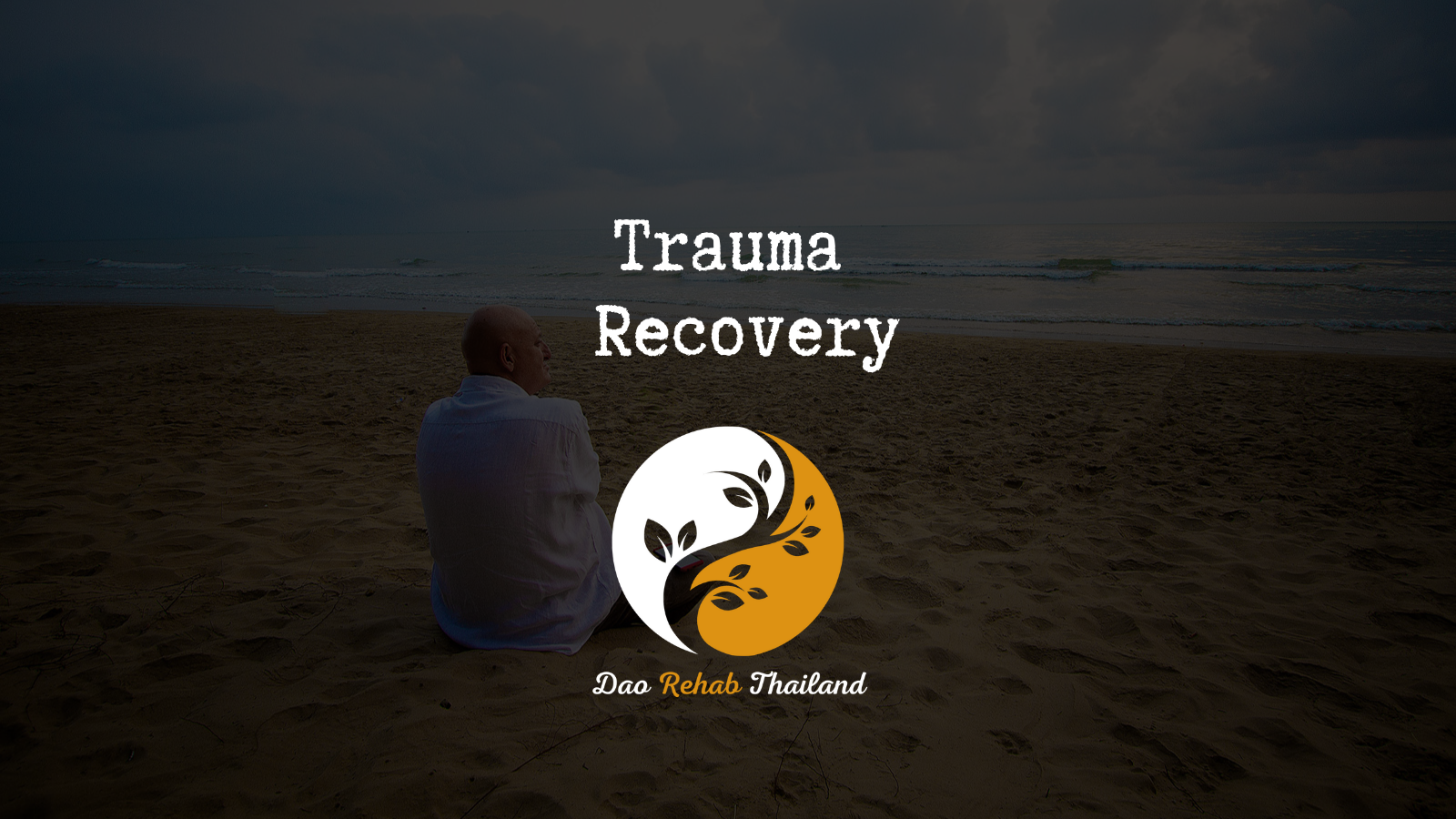Help For
A Loved One
Everything is possible

Help for a Loved One
Is Addiction Rehab Right for You or a Loved One?
It’s not a moral problem they have a disease
The only recovery center in Asia located on the beach.
+972-524494979

Is Dao rehab using the Tao therapy method suitable for you or a family member
Looking into the possibility of addiction treatment for yourself or a loved one? What kind of treatment program would work best? Learn about the options and possible next steps.

Help for a Loved One
We understand that reaching out for help in the struggle against drug or alcohol addiction can be difficult and confusing. But we are here for you, and we know how to guide you or your loved one on the path to recovery. Call toll-free, or contact us via email or WhatsApp for a confidential conversation with an addiction recovery specialist. It’s time to return to your true self.

What is important to ask ourselves?
Causes and risk factors for prescription drug addiction
Prescription drug addiction often begins with misuse, such as taking a higher dose than prescribed or using someone else’s medication for non-medical reasons.
Risk factors for prescription drug addiction include a history of substance abuse, mental health disorders like depression or anxiety, and chronic pain that requires ongoing medication.
Genetic predisposition, environmental influences, and the addictive nature of certain medications also play significant roles in the development of prescription drug addiction.
1. Understanding Your Situation
When you call, we'll have you talk with a licensed professional about your situation—types of drugs being abused, patterns of use, physical and mental health, and other issues. This free, phone-based assessment will help us determine whether addiction treatment makes sense for you or your loved one and—if so—what type.
2. Paying for Alcohol or Drug Rehab
In most cases, addiction treatment program costs are covered in part by insurance. When you call, we'll connect you with a financial case manager who will verify your insurance coverage, answer your questions about treatment costs, identify possible resources—including whether you qualify for financial aid from the Hazelden Betty Ford Foundation—and work out payment options.
3. Making Arrangements
Our recovery experts know how to get you or your loved one into a drug or alcohol rehab program that best fits your needs—quickly, easily, and confidentially. With 17 inpatient and outpatient treatment locations throughout the country, we have an addiction rehab program to meet all levels of patient needs. The admissions process can begin as soon as you call. We answer the phone 24/7.

contact us
Contact us with your questions
We would love to speak with you! Feel free to reach out with any questions.

get in touch
Schedule a free consultation
Schedule a free consultation with our team and let’s make things happen!
Dao-Therapy: Articles on Trauma and Addictions

Drug Rehabilitation
Drug rehabilitation in Dao Therapy focuses on an integrative approach that includes in-depth psychological therapy, work on past traumas, and the use of holistic tools such as yoga, meditation, and breathing techniques. The goal is not only to detoxify the body from the physical toxins of drugs but also to address the emotional and spiritual roots of addiction, helping the patient build a new life based on stability, inner connection, and spiritual growth.

Alcohol Rehabilitation
Alcohol rehabilitation in Dao Therapy is conducted through a holistic approach that combines deep psychological therapy with spiritual practices such as meditation, yoga, and breathing techniques. This process is designed to help the individual address the emotional and mental reasons behind the addiction, supporting the body’s physical healing from alcohol and fostering connection with inner forces of change and healing.

Trauma Recovery
Trauma recovery in Dao Therapy focuses on a multi-dimensional approach that combines psychotherapy, deep emotional processing, and mind-body practices such as meditation and yoga. The approach aims to release traumatic energy from the body, strengthen personal resilience in facing painful memories, and build a new foundation for healing, stability, and spiritual connection.

Gambling Rehabilitation
Gambling rehabilitation in Dao Therapy involves a combination of psychological tools and spiritual techniques aimed at identifying addictive impulses, exploring the deeper causes of compulsive behavior, and developing emotional and spiritual coping tools that lead to a balanced, addiction-free life.

Prescription Drug Rehabilitation
Prescription drug rehabilitation in Dao Therapy focuses on a holistic approach that combines in-depth psychological treatment with traditional methods such as yoga and breathing techniques. This approach aims to address the roots of addiction and support a complete healing process for the body, mind, and spirit.
If you would like to know more about taotherapy Trauma and Addiction Treatment Center in Thailnd, feel free to drop us a quick message here. Coming to Taotherapy is more than just recovery. You will find support here for life. Even after completing treatment, we offer support groups for continuing support on your journey.
Welcome to the journey
What is the disease of addiction?
What Is the Medical Definition of Addiction?
The medical definition of addiction is a chronic, relapsing disorder characterized by compulsive drug seeking, continued use despite harmful consequences, and long-lasting changes in the brain. It is considered a brain disorder because it involves functional changes to brain circuits involved in reward, stress, and self-control. These changes can persist long after an individual stops using the substance or engaging in the behavior, making addiction a complex condition that affects both brain function and behavior.
Addiction is not limited to substance use, such as drugs or alcohol; it can also include behavioral addictions, such as gambling or internet use. The key elements of addiction include a loss of control over the behavior, a preoccupation with the substance or activity, and continued engagement in the behavior despite negative consequences.
Treatment often requires a combination of medical, psychological, and social interventions to help individuals regain control and achieve long-term recovery.
Like other chronic diseases such as diabetes, asthma and hypertension, addiction often involves cycles of relapse (recurrence of symptoms) and remission. Other criteria used by the medical community in classifying substance use disorder as a disease include:
- Observable symptoms and signs
- Biological origins
- Predictable progression
- Responsive to treatment
Here are three critical facts you need to know about drug addiction if you’re concerned about yourself or a loved one:
- It’s progressive—if unaddressed, it will get worse
- It’s chronic—there is no cure, but it can be successfully managed
- It’s potentially fata
What Does Science Tell Us about Drug Abuse and Dependence?
Science provides a comprehensive understanding of drug abuse and dependence, highlighting the biological, psychological, and environmental factors that contribute to these conditions. Here are some key insights:
1. Biological Basis:
– Brain Changes: Drug abuse alters the brain’s structure and function, particularly in areas related to reward, motivation, memory, and control over behavior. These changes can lead to compulsive drug-seeking behaviors and make it difficult to quit.
– Neurotransmitters: Many drugs increase levels of neurotransmitters like dopamine, which create feelings of pleasure. Over time, the brain’s ability to produce and respond to these chemicals naturally diminishes, leading to dependence and tolerance (needing more of the drug to achieve the same effect).
2. Genetic Factors:
– Inherited Risk: Genetics play a significant role in the likelihood of developing drug dependence. Individuals with a family history of addiction are more susceptible, although environmental factors also contribute.
– Gene-Environment Interaction: The interplay between genetic predisposition and environmental exposure (such as stress or drug availability) influences the risk of addiction.
3. Psychological Aspects:
– Mental Health: Mental health disorders, such as anxiety, depression, or PTSD, often co-occur with substance abuse. Drugs may be used as a form of self-medication, which can lead to dependence.
– Behavioral Patterns: Habitual drug use is reinforced by psychological factors, including stress relief, social pressure, or the desire to experience pleasure, creating a cycle that’s hard to break.
4. Environmental Influences:
– Social and Cultural Factors:** Peer pressure, family dynamics, and societal attitudes toward drug use can strongly influence an individual’s drug-related behaviors.
– Stress and Trauma: Exposure to stressful life events or trauma, particularly during early development, increases the risk of drug abuse and dependence.
5. Progression from Abuse to Dependence:
– Initial Use: Drug abuse often begins with experimentation or recreational use, which can escalate due to the brain’s adaptation to the drug’s effects.
– Dependence: Over time, abuse can lead to physical and psychological dependence, characterized by the inability to function normally without the substance and the experience of withdrawal symptoms when not using.
6. Treatment and Recovery:
– Evidence-Based Approaches: Effective treatment for drug abuse and dependence often involves a combination of behavioral therapies, medication, and support systems. Cognitive-behavioral therapy (CBT), motivational interviewing, and medication-assisted treatment (MAT) are commonly used.
– Long-Term Recovery: Science shows that addiction is a chronic condition, meaning that ongoing management and support are often necessary to maintain recovery and prevent relapse.
Overall, science emphasizes that drug abuse and dependence are complex, multifaceted conditions that require a holistic approach to treatment, considering both the biological underpinnings and the psychological and environmental factors that contribute to addiction.
Why Is Addiction Considered a Brain Disease?
Addiction is considered a brain disease because it fundamentally changes the brain’s structure and function, particularly in areas related to reward, motivation, memory, and control over behavior. These changes are long-lasting and can persist even after a person stops using the substance or engaging in the addictive behavior. Here’s why addiction is classified as a brain disease:
1. Impact on Brain Structure and Function:
– Alteration of Brain Circuits: Addiction alters the brain’s reward circuitry, particularly in the limbic system, which is responsible for the feelings of pleasure and motivation. Drugs and addictive behaviors can cause the brain to release large amounts of dopamine, a neurotransmitter associated with pleasure. Over time, this overstimulation leads to changes in the brain’s structure and function.
– Tolerance and Dependence: Repeated exposure to addictive substances causes the brain to adapt, reducing its response to the drug. This leads to tolerance, where higher doses are needed to achieve the same effect, and dependence, where normal functioning becomes impaired without the substance.
2. Compulsive Behavior:
– Loss of Control: Addiction hijacks the brain’s executive function, which is responsible for decision-making and impulse control, primarily involving the prefrontal cortex. This leads to compulsive drug-seeking and using behaviors, even when they cause harm. The brain’s ability to control these impulses is significantly weakened, making it difficult for individuals to stop using despite the negative consequences.
– Craving and Triggers: Addiction creates powerful cravings and sensitivity to triggers, such as people, places, or emotions associated with the substance use. These cravings can be intense and difficult to resist, leading to relapse even after periods of abstinence.
3. Chronic Nature:
– Relapsing Condition: Addiction is a chronic disease, similar to other chronic diseases like diabetes or heart disease. It involves cycles of relapse and remission, where the individual may struggle with staying substance-free. The brain changes associated with addiction make relapse a persistent risk, even after long periods of sobriety.
– Ongoing Management: Like other chronic diseases, addiction requires ongoing treatment and management. The brain’s alterations mean that recovery is a lifelong process that often involves continuous effort, therapy, and sometimes medication.
4. Biological Predisposition:
– Genetic Influence: Genetics can make some individuals more susceptible to addiction, as certain genetic factors influence how the brain responds to drugs or alcohol. These genetic predispositions are another reason why addiction is considered a disease, as they affect the likelihood of developing the condition.
5. Neuroplasticity:
– Brain’s Ability to Change: Neuroplasticity refers to the brain’s ability to change and adapt throughout life. While addiction causes harmful changes in the brain, recovery is also possible because of the brain’s capacity to rewire itself with the right treatment and support. This concept supports the idea that, although addiction is a brain disease, recovery involves re-training the brain and developing new, healthier patterns of behavior.
In summary, addiction is considered a brain disease because it involves significant, lasting changes in brain structure and function, leading to compulsive behavior, loss of control, and chronic patterns of relapse and remission. Understanding addiction as a brain disease underscores the importance of medical treatment and ongoing support in recovery.
What Are the Stages of Addiction?
The stages of addiction describe the progression from initial use of a substance or behavior to full-blown addiction. Understanding these stages can help identify the signs of addiction early and seek appropriate intervention. The stages typically include:
1. Experimentation:
– Initial Use: This stage involves the first exposure to a substance or behavior, often driven by curiosity, peer pressure, or the desire to experience something new. Experimentation may be occasional and is usually seen as a social activity or a way to cope with stress or emotions.
2. Regular Use:
– Increased Frequency: At this stage, the substance or behavior starts to become a regular part of life. The individual may use it in specific situations, such as on weekends or when socializing. The use may still be controlled, but it becomes more frequent and begins to play a larger role in the person’s routine.
3. Risky Use:
– Negative Consequences: Risky use is characterized by an increase in the frequency and intensity of the substance or behavior, despite negative consequences. The individual may start using in risky situations, such as driving under the influence or using substances alone. At this stage, the person may begin to experience problems at work, school, or in relationships due to their use.
4. Dependence:
– Physical and Psychological Dependence: Dependence develops when the body and mind adapt to the substance, leading to tolerance (needing more of the substance to achieve the same effect) and withdrawal symptoms when not using it. The individual may feel unable to function normally without the substance or behavior, and use becomes a priority over other aspects of life.
5. Addiction:
– Loss of Control: Addiction is the final stage, characterized by a complete loss of control over the substance or behavior. The individual continues to use despite severe negative consequences, including physical, psychological, and social harm. The compulsion to use becomes overpowering, and the individual may feel unable to stop even if they want to. Addiction is marked by compulsive behavior, a focus on the substance or behavior to the exclusion of other interests, and a high risk of relapse after periods of abstinence.
6. Crisis/Chronic Addiction:
– Severe Consequences:** At this stage, the addiction has reached a point where the individual’s life may be in serious jeopardy. The person may face health crises, legal problems, financial ruin, and broken relationships. Despite these consequences, the addiction persists, often leading to chronic health conditions or life-threatening situations.
7. Treatment and Recovery:
– **Intervention and Recovery:** If the individual seeks or is forced into treatment, they enter the recovery process. This stage involves detoxification, therapy, and lifestyle changes aimed at overcoming addiction and rebuilding a healthy life. Recovery is an ongoing process, often requiring long-term support and management to prevent relapse.
Understanding these stages can help individuals and their loved ones recognize the signs of addiction early and seek appropriate treatment before the condition worsens.
What Are the Main Symptoms of Substance Use Disorder?
Substance Use Disorder (SUD) is a medical condition characterized by an individual’s inability to control their use of a substance despite harmful consequences. The symptoms of SUD can vary depending on the substance used, but the main symptoms generally include:
1. Craving and Compulsion:
- Intense Urges: A strong, often overwhelming desire or craving to use the substance, which can be difficult to resist.
- Compulsive Use: An inability to stop using the substance, even when there is a clear desire to quit or cut down.
2. Loss of Control:
- Using More than Intended: Consuming larger amounts of the substance or using it for a longer period than initially intended.
- Unsuccessful Attempts to Quit: Repeatedly trying to reduce or stop using the substance, but failing to do so.
3. Tolerance:
- Increased Usage: Needing more of the substance to achieve the same effects that were previously obtained with smaller amounts.
- Diminished Effects: Experiencing a reduced effect when using the same amount of the substance.
4. Withdrawal Symptoms:
- Physical and Psychological Discomfort: Experiencing withdrawal symptoms—such as anxiety, irritability, nausea, sweating, or tremors—when not using the substance.
- Using to Relieve Withdrawal: Taking the substance to alleviate or avoid withdrawal symptoms.
5. Neglect of Responsibilities:
- Impact on Daily Life: Failing to fulfill major obligations at work, school, or home due to substance use.
- Continued Use Despite Problems: Continuing to use the substance even when it causes or worsens problems in personal, social, or professional life.
6. Social and Interpersonal Issues:
- Isolation: Withdrawing from family, friends, and social activities in favor of using the substance.
- Conflict: Having ongoing relationship problems or conflicts with others due to substance use.
7. Risky Behavior:
- Dangerous Situations: Engaging in risky or dangerous behaviors, such as driving under the influence, while using the substance.
- Legal Problems: Experiencing legal issues as a result of substance use, such as arrests for driving under the influence or other criminal activities.
8. Physical and Mental Health Issues:
- Health Deterioration: Suffering from physical health problems, such as liver damage, respiratory issues, or infections, as a result of substance use.
- Mental Health Decline: Experiencing mental health issues, such as anxiety, depression, or cognitive impairments, that are exacerbated by substance use.
9. Increased Time Spent Using:
- Preoccupation: Spending a significant amount of time obtaining, using, and recovering from the effects of the substance.
- Neglecting Activities: Giving up or reducing participation in important social, occupational, or recreational activities because of substance use.
10. Continued Use Despite Harm:
- Awareness of Harm: Continuing to use the substance despite being aware of the physical, psychological, or social harm it is causing.
These symptoms are used by healthcare professionals to diagnose Substance Use Disorder, typically through criteria outlined in the Diagnostic and Statistical Manual of Mental Disorders (DSM-5). The severity of SUD is determined by the number of symptoms present, ranging from mild to severe. Recognizing these symptoms early can help in seeking appropriate treatment and support.
How Are Families Impacted by a Loved One's Substance Abuse?
Families are profoundly affected by a loved one’s substance abuse, often experiencing a wide range of emotional, psychological, financial, and social challenges. Here are some of the key ways families are impacted:
1. Emotional and Psychological Stress:
- Anxiety and Fear: Family members often live in a constant state of anxiety, worrying about their loved one’s safety, health, and future. The unpredictability of substance abuse can create a tense and fearful environment.
- Depression and Hopelessness: Watching a loved one struggle with addiction can lead to feelings of helplessness, sadness, and despair. Family members may feel overwhelmed by the situation, leading to depression.
- Guilt and Shame: Families may experience guilt, wondering if they somehow contributed to the addiction, or they may feel ashamed to discuss the issue with others, leading to isolation.
2. Disruption of Family Dynamics:
- Strained Relationships: Substance abuse can strain relationships between family members, leading to conflicts, resentment, and breakdowns in communication. Trust is often eroded, making it difficult to maintain healthy relationships.
- Role Changes: Family roles can shift dramatically; for example, children might take on caregiving responsibilities, or spouses may need to manage both household duties and the emotional burden of addiction.
- Enabling Behaviors: Some family members may inadvertently enable the addiction by providing financial support, making excuses, or covering up the problem, believing they are helping when, in reality, it perpetuates the addiction.
3. Financial Strain:
- Increased Expenses: Addiction can lead to significant financial strain, including costs associated with legal issues, healthcare, and treatment. The individual with the addiction may also misuse family resources to support their habit.
- Loss of Income: If the addicted person is unable to work or loses their job due to their substance use, the family may suffer from a loss of income, further exacerbating financial stress.
4. Impact on Children:
- Emotional and Behavioral Problems: Children in families affected by substance abuse are at higher risk for emotional and behavioral issues, such as anxiety, depression, and difficulties in school.
- Neglect and Abuse: In severe cases, children may experience neglect or abuse if the addicted family member is unable to provide proper care or if the household becomes a chaotic or unsafe environment.
- Cycle of Addiction: Children who grow up in households with substance abuse are at a greater risk of developing addiction themselves, perpetuating a cycle of addiction across generations.
5. Social Isolation:
- Stigma and Judgment: The stigma associated with addiction can lead families to withdraw from social interactions and community involvement, fearing judgment from others.
- Loss of Support Networks: As the addiction progresses, families may lose their support networks, either because they distance themselves due to the behavior of the addicted person or because friends and relatives pull away.
6. Impact on Health:
- Physical Health Issues: The stress and anxiety of dealing with a loved one’s addiction can take a toll on family members’ physical health, leading to issues such as high blood pressure, headaches, and sleep disorders.
- Mental Health Struggles: Family members are also at an increased risk of developing mental health issues, such as anxiety disorders, depression, and post-traumatic stress disorder (PTSD).
7. Grieving and Loss:
- Anticipatory Grief: Families may experience a form of grief even while their loved one is still alive, mourning the loss of the person they once knew as the addiction takes hold.
- Coping with Loss: In tragic cases, addiction can lead to the loss of a loved one, whether through overdose, health complications, or accidents, leaving the family to cope with profound grief and sorrow.
8. Long-Term Recovery:
- Ongoing Support: Even after the loved one enters recovery, the family may continue to experience stress and anxiety, fearing relapse. However, they also play a crucial role in supporting the individual’s recovery journey.
- Family Therapy: Engaging in family therapy can help heal relationships, rebuild trust, and establish healthier dynamics, contributing to the recovery of both the individual and the family as a whole.
In summary, a loved one’s substance abuse can have devastating effects on a family, touching every aspect of their lives. However, with the right support and resources, families can navigate these challenges, and healing is possible for both the individual struggling with addiction and their loved ones.
Can You Fully Recover from Addiction to Alcohol or Other Drugs?
Yes, it is possible to fully recover from addiction to alcohol or other drugs, but recovery is often a complex, ongoing process that requires commitment and support. Here are some key points about recovery:
1. Recovery Is Possible:
- Achieving Sobriety: Many people successfully achieve long-term sobriety and live fulfilling, healthy lives after addiction. Recovery involves breaking the physical dependence on the substance and addressing the psychological and emotional aspects of addiction.
- Life-Long Process: Recovery is not just about stopping the use of alcohol or drugs; it involves creating a new way of living that supports continued sobriety. This process can include building healthier relationships, developing coping strategies, and finding new purposes or goals.
2. Support Systems Are Crucial:
- Professional Treatment: Many individuals benefit from professional treatment programs that offer medical detox, therapy, counseling, and support groups. These programs provide the tools needed to manage cravings, avoid triggers, and maintain sobriety.
- Ongoing Support: After formal treatment, ongoing support is essential. This can include participation in 12-step programs like Alcoholics Anonymous (AA) or Narcotics Anonymous (NA), therapy, and connecting with a supportive community. Regular check-ins and support groups help prevent relapse and reinforce recovery.
3. Addressing Underlying Issues:
- Mental Health: Effective recovery often requires addressing underlying mental health issues such as depression, anxiety, or trauma, which may have contributed to the addiction. Treating these co-occurring disorders is key to sustaining recovery.
- Behavioral Changes: Recovery involves changing behaviors, thought patterns, and environments that may have supported the addiction. Developing new, healthier habits and routines is critical to avoiding relapse.
4. Relapse Does Not Mean Failure:
- Part of the Process: Relapse can be a part of the recovery journey. It’s important to understand that experiencing a relapse does not mean that recovery has failed. Instead, it should be seen as a signal to adjust the recovery plan, seek additional support, or recommit to sobriety.
- Learning Opportunity: Many people use the experience of relapse to learn more about their triggers and vulnerabilities, which can strengthen their recovery efforts going forward.
5. Holistic Healing:
- Physical, Emotional, and Spiritual Recovery: Recovery from addiction is often described as healing the mind, body, and spirit. This holistic approach ensures that all aspects of the individual’s well-being are addressed, leading to a more complete and lasting recovery.
6. Recovery Can Lead to Transformation:
- Positive Change: Many people in recovery experience profound personal growth and transformation. They develop resilience, gain deeper self-awareness, and often find new meaning or purpose in life. Recovery can be a transformative experience that leads to a healthier, more fulfilling life.
In conclusion, full recovery from addiction is possible, but it requires effort, support, and a willingness to change. While the journey may be challenging and may include setbacks, many people successfully overcome addiction and go on to live rewarding, sober lives.
haven for those
seeking recovery
Nestled in the serene surroundings of Pranburi, Dao-Therapy Rehab offers a tranquil haven for those seeking recovery. Pranburi, with its stunning coastal views and peaceful atmosphere, is an ideal location for deep healing and transformation. Our center is designed to blend seamlessly with the natural beauty of the area, creating a serene environment where clients can focus on their recovery. At DaoTherapy Rehab, we combine the best of holistic therapies with the proven success of the 12 Steps program. Our team includes some of the most skilled therapists and practitioners, all dedicated to guiding our clients through their journey of healing. Surrounded by the calm of nature, clients benefit from a uniquely tailored program that addresses the physical, emotional, and spiritual aspects of recovery. Pranburi is not just a place to heal; it’s a place to renew, restore, and reclaim your life.
Total Body Fitness
MIND BODY
AND SOUL
balance
Balance in Dao is the ability to flow in harmony with nature, maintaining inner and outer flexibility without struggle or resistance, thereby achieving deep peace and living in harmony.
peace
To attain peace, we must let go of attachment to thoughts and expectations, and embrace full acceptance of the present moment as it is.
home care
Home therapy in DaoTherapy focuses on creating a healing environment where the patient learns to balance the body, mind, and spirit through practices of mindfulness, breathing, and movement, aiming to restore inner energy and return to life in harmony and peace.
giving
Giving as a value in Dao is expressed through sharing and letting go from the heart, without expecting anything in return. It is a natural act of flow, allowing energy to move freely and fostering growth and reciprocity between the individual and their surroundings.











rebirth
Comprehensive Treatment Programs
The rehab program and agenda are based on 33 years of experience by Dr. Mizrahi Avraham to provide a solid foundation and emphasis for a continuous recovery process
Individual Therapy Sessions
Kundalini Yoga for Trauma Recovery
Group Therapy program
Holistic Massage and Essential Oil Therapy
Meditations from different worlds
Customized Physical Fitness
Outdoor Pool in Dao Rehab
12 steps program
The Special Meals at Tao Rehab
The healthy Thai cuisine at Tao Rehab is based on fresh and nutritious ingredients, aiding in the body’s recovery and supporting the rehabilitation process. The meals are tailored to the nutritional needs of the patients, providing essential energy and balance for recovery.
-
- “Authentic Thai food at Dao Rehab, providing nutritious meals that support holistic recovery.”
-
- “Authentic Thai food at Dao Rehab, providing nutritious meals that support holistic recovery.”
-
- “Authentic Thai food at Dao Rehab, providing nutritious meals that support holistic recovery.”
-
- “Authentic Thai food at Dao Rehab, providing nutritious meals that support holistic recovery.”
We guarantee freedom from addiction
from start to finish
Our expert team is dedicated to guiding you toward lasting wellness and peace. Experience holistic healing at Tao Rehab, where mind, body, and spirit come together.
- 30+ Years of Experience
- Experience holistic healing
- life-changing recovery journey
- personalized and compassionate care

You ask, we answer
Here is a list of frequently asked questions that people might ask when they are interested in rehabilitation in general, as well as questions specifically related to the “Tao Rehab” center in Thailand:
At Tao Rehab, the rehabilitation process is holistic and tailored to each individual. We focus on treating not only the physical aspects of addiction but also the mental, emotional, and spiritual well-being. Our process includes comprehensive assessments, personalized treatment plans, and ongoing support, ensuring that each patient receives the most effective care for long-term recovery.
Tao Rehab stands out from other rehabilitation centers by offering a unique blend of traditional therapeutic approaches combined with holistic practices like meditation, yoga, and mindfulness. This integrative approach not only addresses the symptoms of addiction but also helps in healing the root causes, providing a more balanced and sustainable recovery.
Choosing Tao Rehab means choosing a center with a proven track record of success and a compassionate, experienced team. We are fully certified and adhere to the highest standards of care, ensuring that our patients receive the best possible treatment in a safe, serene environment that fosters healing and growth.
If you or a loved one is struggling with addiction and its effects on physical, mental, or emotional health, Tao Rehab offers a supportive and effective solution. We provide a safe space for individuals to confront their challenges and begin their journey toward recovery with the guidance of expert professionals.
Our treatment program at Tao Rehab includes a comprehensive range of services: medical detoxification, individual and group therapy, holistic treatments like acupuncture and massage, as well as life skills training and aftercare planning. This integrated approach ensures that patients are not only detoxed but also equipped with the tools they need to maintain sobriety.
Tao Rehab boasts a high success rate, thanks to our personalized treatment plans and continuous support even after patients leave the center. We emphasize long-term recovery, offering aftercare programs and ongoing counseling to help individuals stay on track. Many of our patients achieve lasting sobriety and lead fulfilling lives after their time with us.
While some may attempt to quit independently, the risks are significant, and the chances of relapse are high. Tao Rehab provides the structured environment, medical supervision, and psychological support necessary to make recovery more manageable and successful. Our team is here to guide you through every step, reducing the risks and increasing your chances of long-term success.
Tao Rehab is beautifully located in a serene and secluded area of pranburi Thailand, providing the perfect environment for recovery. The peaceful surroundings and natural beauty contribute to the healing process, allowing patients to focus fully on their recovery journey, away from the distractions and triggers of everyday life.
Tao Rehab offers comfortable and luxurious accommodations designed to support your recovery journey. Patients can choose between private rooms and shared spaces, all equipped with modern amenities. The environment is designed to be both therapeutic and comfortable, ensuring that patients feel at home while they focus on their healing.
Our treatment approach is comprehensive and holistic, combining evidence-based therapies with alternative practices like mindfulness and yoga. We believe in treating the whole person, not just the addiction, which is why our programs are designed to promote overall well-being and personal growth. This unique blend of therapies sets Tao Rehab apart from other centers.
The treatment program at Tao Rehab is all-inclusive, covering everything from medical detox to psychological therapy and aftercare planning. We offer individual therapy, group sessions, family counseling, and holistic treatments that address the body, mind, and spirit. Our goal is to provide a comprehensive path to recovery that addresses all aspects of addiction.
Our treatment team at Tao Rehab is made up of highly qualified professionals with extensive experience in addiction treatment and holistic therapies. They are compassionate, dedicated, and committed to helping each patient achieve lasting recovery. With a multidisciplinary approach, our team works together to provide personalized care that addresses every aspect of your well-being.
At Tao Rehab, we understand that recovery doesn’t end when you leave the center. That’s why we offer robust aftercare programs, including ongoing counseling, support groups, and regular check-ins. We also help connect patients with local resources and communities to ensure they have the support they need to maintain their sobriety long after their stay with us.
are you ready to wake up?Contact us today
“A person who suppresses his selfish desires and does what he must do, integrates in harmony on both axes: on the vertical axis – with life in its entirety and on the horizontal axis with every other individual being.”










